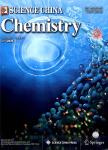A facile design for multifunctional AIEgen based on tetraaniline derivatives
A facile design for multifunctional AIEgen based on tetraaniline derivatives作者机构:Key laboratory of Aerospace Advanced Materials and Performance Ministry of Education School of Materials Science and EngineeringBeihang University Department of Chemistry HKUST Jockey Club Institute for Advanced Study Institute of Molecular Functional Materials Division of Biomedical Engineering State Key Laboratory of Molecular Neuroscience Division of Life Science The Hong Kong University of Science and Technology Laboratory of Bio-Inspired Smart Interfacial Science and Technology of Ministry of Education Key Laboratory of Beijing Energy School of Chemistry and Environment Beihang University
出 版 物:《Science China Chemistry》 (中国科学(化学英文版))
年 卷 期:2019年第62卷第6期
页 面:732-738页
核心收录:
基 金:supported by the National Natural Science Foundation of China (21574003 21875009)
主 题:tetraaniline aggregation-induced emission Fe3+ ion detection bacteria imaging
摘 要:Aniline oligomers have been widely used in many fields due to their excellent physicochemical properties. Owing to strong intermolecular interactions, their emission is always weakened or quenched when they are in high concentration or aggregated state, which greatly limits their fluorescent applications. Inspired by the concept of aggregation-induced emission(AIE), herein we introduced large steric groups onto the aniline oligomer to prevent the formation of packing structure. In particular, diphenyl vinyl group was bonded with oligomeric tetraaniline by a facile synthetic procedure with high yield. The obtained aniline oligomer derivative exhibited typical AIE features, which was also confirmed by density functional theoretical calculation. More importantly, this AIE oligomer was able to detect Fe^(3+) ions selectively and quantitatively. The fluorescence intensity decreased linearly along with the increment of Fe^(3+) concentration. Moreover, we demonstrated that this AIE oligomer could stain live bacteria, such as E. coli and S. aureus efficiently. All these results suggest that such a readily accessible and multifunctional tetraaniline derivative provides a new platform for the construction of fluorescent materials.



